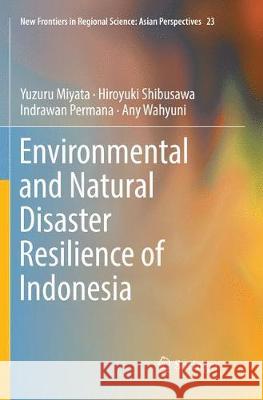Environmental and Natural Disaster Resilience of Indonesia » książka
topmenu
Environmental and Natural Disaster Resilience of Indonesia
ISBN-13: 9789811340925 / Angielski / Miękka / 2019 / 199 str.
Kategorie:
Kategorie BISAC:
Wydawca:
Springer
Seria wydawnicza:
Język:
Angielski
ISBN-13:
9789811340925
Rok wydania:
2019
Wydanie:
Softcover Repri
Ilość stron:
199
Waga:
0.32 kg
Wymiary:
23.62 x 23.62 x 1.02
Oprawa:
Miękka
Wolumenów:
01











